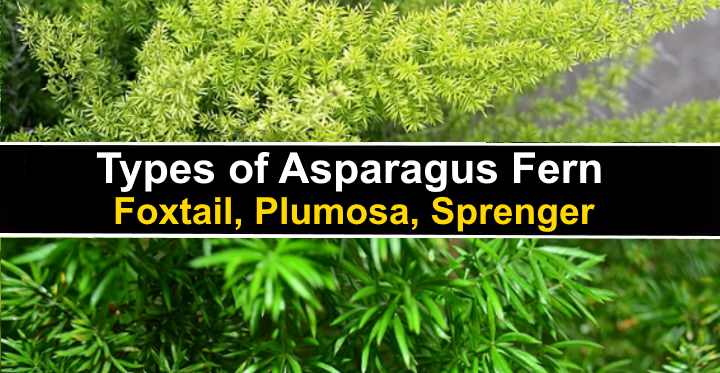Asparagus ferns are attractive, decorative plants characterized by their slender, fern-like leaves growing in clusters. Although they are often referred to as ferns, they are actually perennial plants belonging to the Asparagaceae family. The various types of asparagus ferns include Foxtail ferns, Plumosa ferns, and Sprengeri ferns, among others.
Asparagus Fern Facts
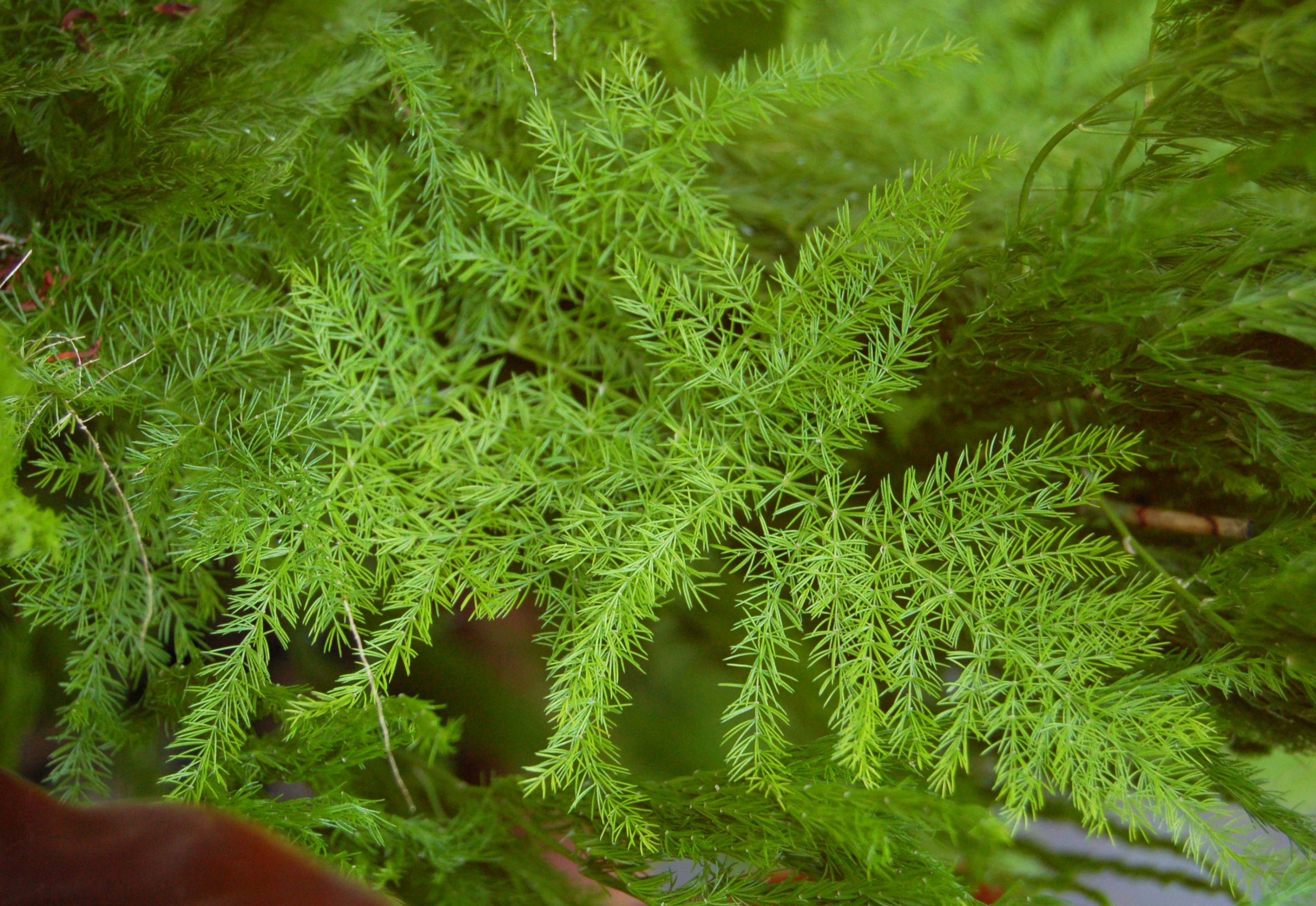
One may easily confuse different types of asparagus ferns due to their similar appearances. These fern-like plants are referred to by a variety of common and scientific names, such as Asparagus plumosus, Asparagus setaceus, and Protasparagus setaceus, which all describe the same species. Because they resemble ferns, plants in the Asparagus genus are commonly referred to as ferns. The delicate, feathery leaves of asparagus plants closely resemble true ferns, as evident from images of the plant and its foliage.
In contrast to true ferns, which reproduce through spores and belong to the Polypodiopsida class, asparagus ferns produce seeds and belong to the Asparagaceae class. Asparagus ferns have flattened, leaf-like structures called cladodes, which botanists note are necessary for photosynthesis. For simplicity’s sake, we will refer to these cladodes as “leaves” in this discussion. In the spring, asparagus ferns produce small white or pinkish flowers on their leaf-like stems, or cladodes, and later bear small green or red berries following pollination.
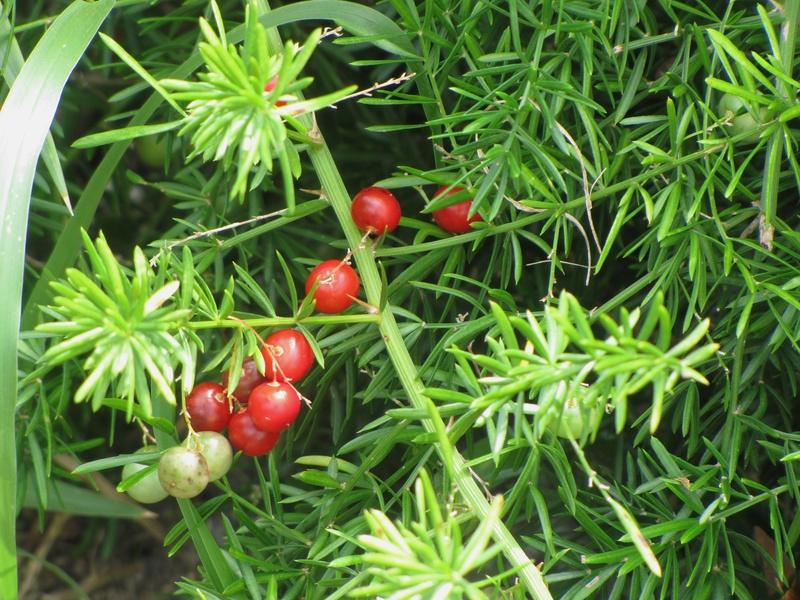
It is crucial to keep in mind that Asparagus densiflorus ‘Sprengeri’ plants have the potential to become invasive when grown outdoors. These asparagus ferns have tuberous roots that can spread quickly in regions with USDA zones 9 to 11. Therefore, whether you aim to enhance the greenery in your backyard, patio, deck, or balcony, or you wish to grow asparagus fern plants in pots, it is advisable to grow them in containers.
How to Care for Asparagus Ferns – Overview
Asparagus ferns are evergreen houseplants that can thrive indoors and are relatively easy to maintain. To ensure optimal growth, it is recommended to grow asparagus ferns in partial shade and protect them from direct sunlight. Water the plants once a week or when the top layer of soil is dry, and mist them regularly during the growing season to maintain humidity. Fertilization every month can also help promote healthy growth.
Types of Asparagus Fern Plants (With Pictures)
Asparagus ferns come in a variety of colors and shapes.
Asparagus Foxtail Fern (Asparagus densiflorus ‘Meyeri’)

Asparagus foxtail ferns are characterized by bushy plumes that resemble a fox’s tail, with beautiful arching plumes that include bundles of needle-like leaves. These ferns produce tiny white flowers that later develop into red berries during their flowering stage. As hardy, drought-tolerant plants, foxtail ferns are fast-growing ground cover plants that thrive in morning sun and afternoon light shade.
These ferns can grow up to 2 feet (0.6 meters) tall and spread to a width of 4 feet (1.2 meters) in USDA zones 9 to 11. Although they are typically grown outdoors, asparagus foxtail ferns can also be grown indoors in containers that are shielded from direct sunlight. Other common names for this plant include plume asparagus and asparagus fern. Asparagus densiflorus ‘Myers,’ Asparagus densiflorus ‘Myersii,’ and Asparagus densiflorus ‘Myersi’ are some of the cultivar names for this type of asparagus fern.
Sprenger Asparagus or Sprengeri Fern (Asparagus densiflorus ‘Sprengeri’)
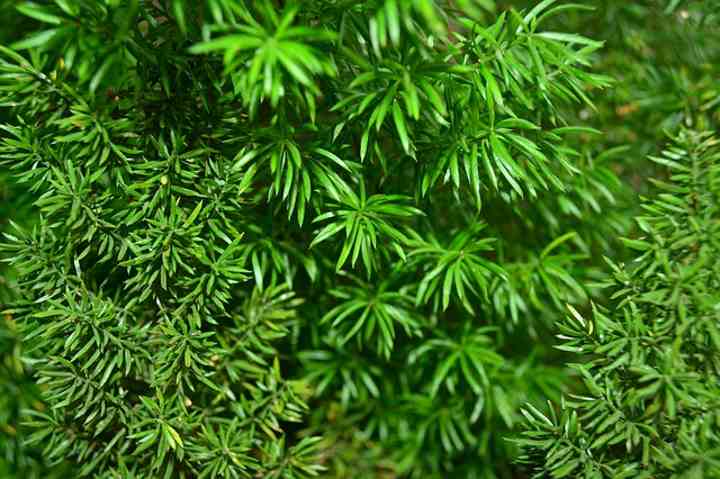
Sprenger’s asparagus ferns are characterized by their arching, fern-like leaves that feature deeply clustered soft needles. The emerald-green leaves of the Sprengeri ferns have an airy appearance that is reminiscent of a true fern plant. This Asparagus densiflorus cultivar produces white flower clusters that later develop into green berries that turn a vibrant shade of red.
Sprengeri asparagus ferns can grow up to 3 feet (1 meter) tall, making them an excellent choice for hanging basket specimens with their long, cascading needle-like leaves. When grown in containers, these ferns thrive best in the morning sun and partial shade in the afternoon.
Sprenger’s asparagus is also known as the asparagus emerald fern, and some botanical sources refer to it as Asparagus aethiopicus. However, several botanists believe that asparagus plants are classified into two species: Asparagus densiflorus and Asparagus aethiopicus. Asparagus sprengeri and Protasparagus densiflorus are two scientific names for this asparagus cultivar.
Compact Sprenger Asparagus Fern (Asparagus densiflorus ‘Sprengeri Compacta’)
The ‘Sprengeri Compacta’ is a cultivar of Asparagus densiflorus that exhibits short, compact growth. With a spread of 4 ft. (1.2 m), these asparagus ferns grow up to 2 feet (0.6 meters) tall and feature sprays of light green ferns that cascade over the sides of hanging baskets, giving the appearance of airiness.
Compact Sprenger asparagus ferns can be grown as a semi-evergreen outdoor plant all year round in zones 9-11. If you live in colder regions, these ferns can also be grown indoors with ease. Asparagus ferns require a minimum temperature of 55°F (12°C) to thrive outside, while they flourish when the temperatures average 70°F (21°C).
Dwarf asparagus fern (Asparagus densiflorus ‘Nana’)
Dwarf asparagus ferns are characterized by their emerald-green, feathery leaves that are smaller than those of plumosa ferns but more compact. These ferns typically grow to be around 15 inches (0.4 meters) tall, making them an excellent choice for indoor houseplants that can be grown in pots due to their modest growth. The ‘Nana’ asparagus fern is a popular cultivar of dwarf asparagus ferns that is often grown as a houseplant.
Asparagus Plumosus or Asparagus Plumosa Fern (Asparagus setaceus)

Asparagus plumosa ferns are characterized by their rich-green, feathery, flattened sprays that resemble a true fern plant. These ferns have fast growth and produce greenish-white flowers with a bell shape, followed by green berries that gradually turn black.
Asparagus plumosus ferns are easy-to-grow ornamental houseplants that can thrive indoors under the right conditions. These ferns prefer indirect light and can make excellent hanging baskets or indoor plants placed on a windowsill. However, when grown outdoors in shaded dappled light in zones 9-11, they may become invasive. To prevent the ferns from spreading, it is advisable to grow them in pots.
Asparagus plumosa ferns can grow up to 20 feet (6 meters) tall, with long climbing stems that give the plant its plume-like appearance. The fern is also known as Asparagus setaceus, Protasparagus setaceus, and in Latin, “hairy,” due to its hairy leaves. Other common names for the plumosa fern include lace fern, common asparagus fern, ferny asparagus, and asparagus grass. A dwarf cultivar of the asparagus plumosa, called ‘Nanus,’ is also available.
Ming Fern (Asparagus retrofractus)

Ming asparagus ferns are a popular choice for their large, leafy, perennial shrubs with light fern-like flattened sprays. The needle-like leaves grow in tufts or clusters on woody stems, with branches that have a zig-zag pattern and sharp spines, although the foliage appears soft.
Ming ferns can grow to an average height of 6 to 8 feet (1.8 to 2.4 meters) in zones 9 to 11. They prefer bright indirect light or filtered sun and have evergreen foliage. Pom-pom asparagus ferns, Chinese Ming ferns, and zig-zag shrubs are all popular names for ming asparagus ferns.
Asparagus macowanii, asparagus myriocladus, and asparagus macowanii ‘Myriocladus’ are some of the botanical names for this plant.
Climbing Asparagus Fern (Asparagus scandens)
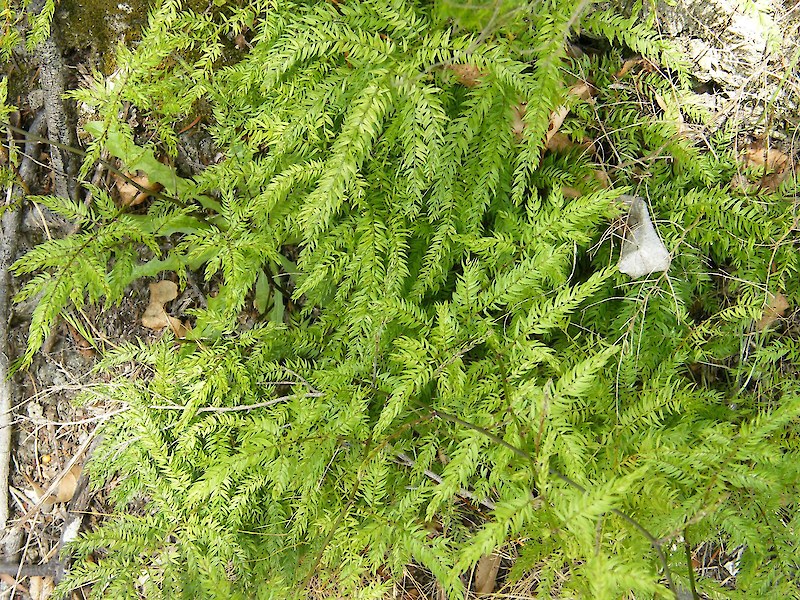
Climbing asparagus ferns can become invasive if grown outside, with scrambling feathery leaves that can grow up to 8 feet (2 meters) tall. The ferns have thin needle-like leaves on flattened branches that give the delicate green foliage its appearance, and small white blooms emerge before giving way to orange-red berries in the spring. In warm regions, climbing asparagus ferns, also known as “krulkransie,” can provide year-round greenery by growing up trellises or arbors.
Alternatively, you can let the spreading leaves develop into a ground cover for shady areas. However, it’s crucial to ensure that the plant is not invasive in your area before purchasing it. Unlike other species of asparagus ferns, Asparagus scandens does not produce thorny spines.
Wild Asparagus Fern (Asparagus acutifolius)
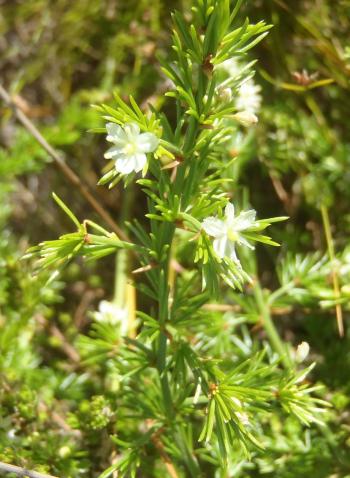
The wild asparagus fern is an evergreen plant with thorny leaves and fern-like foliage. It can grow up to 5 feet (1.5 meters) tall and thrives in full sun or partial shade. Similar to other asparagus ferns, the wild asparagus produces little greenish-white clusters of flowers, and its green berries develop during winter.
This plant species is native to the Mediterranean region. Apart from being known as wild asparagus fern, it also has other botanical names such as Asparagus brevifolius, Asparagus aetnensis, Asparagus corruda, and Asparagus commutatus.
Asparagus Fern Plant Care
As indoor plants, asparagus ferns can thrive and grow well. They prefer to grow in loose, loamy potting mix and should be placed in bright indirect light. Watering should be done when the soil dries out, and misting should be done to keep humidity levels high. Typically, room temperature is ideal for asparagus ferns to thrive.
Asparagus Ferns Light Requirements
To thrive, asparagus ferns require a significant amount of indirect sunlight. Exposing the ferny plant to direct sunlight while growing indoors can cause the leaves to scorch. Asparagus ferns do not grow well in dark environments, and the leaves may start to yellow if they do not receive enough light.
The ideal location for growing asparagus ferns indoors is near a bright window, as long as they are protected from direct sunlight. Growing asparagus ferns on an east-facing windowsill is recommended as they receive some morning sun but no hot midday or evening sunlight.
If you’re growing asparagus ferns in your garden, it is best to plant them where there is some dappled sunlight. Excessive sunlight can cause the delicate asparagus fern leaves to turn yellow.
The Best Soil for Asparagus Fern Plants
Asparagus ferns grow well in light and well-aerated soil that drains quickly. To create a suitable potting mix for houseplants, a combination of one part potting soil and one part perlite is recommended. Peat moss can be used to retain moisture, but coarse sand or perlite should also be added to increase drainage.
Asparagus ferns can thrive in all soil types, from poor to excellent, in their natural habitat. However, the growing medium should not be too wet or soggy, as this can be harmful to the plant. Therefore, it is important to ensure that the soil does not get too moist. To prevent water from pooling in the pot, containers for asparagus ferns should always include drainage holes.
How to Water Asparagus Ferns
Asparagus ferns should only be watered when the potting soil has partially dried. Before watering, check the top 2 inches (5 cm) of the potting mix to ensure that it is dry. Then, thoroughly water the soil until the bottom of the pot drains. Always allow the soil to dry between watering sessions.
The tuber is a bulbous root of asparagus ferns that stores water in the fleshy plant. It is important not to overwater asparagus ferns, as the bulbous roots can rot if placed in too much wet soil. Asparagus ferns are drought-tolerant plants and should not be watered more than once a week. Remember to be cautious with watering and avoid overwatering to prevent the plant from dying.
Temperature and Humidity for Asparagus Fern Care
To grow asparagus ferns indoors, maintain a typical room temperature between 65°F to 70°F (18°C to 21°C). However, the plant needs to be kept below 55°F (13°C). Similar to other ferns, asparagus ferns need to be protected from temperature fluctuations, direct sunlight, and cold drafts.
One of the challenges when caring for asparagus ferns indoors is maintaining the proper humidity levels. Too dry humidity can hinder the growth of asparagus ferns.
To maintain humidity levels, it is recommended to mist the ferns’ feathery sprays with distilled or filtered water once a day. Other ways to maintain humidity levels include using a room humidifier, placing the potted plant on a tray of pebbles and water, or growing the fern alongside other houseplants.
How to Fertilize Asparagus Fern Plants
Asparagus ferns may not always require fertilization, but it can be beneficial for their growth. Applying a diluted liquid fertilizer every month during the growing season can encourage lush foliage development. A half-strength organic houseplant fertilizer should be mixed and applied once a month immediately after watering the plants.
Pruning Asparagus Ferns
Asparagus ferns generally don’t require frequent trimming to thrive. However, you can enhance their appearance by removing any dead, yellow, or brown leaves during the spring season. It’s also important to prune away any dead branches that may be present to promote healthy growth. Additionally, trimming the tips of new stems can encourage bushy growth in asparagus ferns.
Repotting Asparagus Ferns
Asparagus ferns grow rapidly and should be repotted every spring in a larger container, using the root ball from the previous one. They are quite tolerant of being rootbound, but the pot can quickly become too small for the tuberous root, necessitating regular repotting.
Signs that it’s time to repot your asparagus fern indoors include roots protruding from the pot, soil that begins to drain poorly, or a broken pot. While repotting, you may also divide the tuber root to propagate your asparagus fern.
How to Propagate Asparagus Ferns
When propagating asparagus ferns through root division, it is important to split the thick fleshy root into two or three sections and ensure that there are multiple healthy stems on each division. The sections should also have plenty of shoots present. Before planting each section of the bulbous root, fill the growing soil containers with water. This ensures that the soil is well-moistened before planting.
Keeping Asparagus Ferns Free from Pests and Disease
Asparagus ferns are generally hardy plants that are resistant to pests and diseases. However, mealybugs and scale insects can be common pests that affect these plants. These tiny insects can sap the life from healthy plants and hinder their growth.
If you notice the presence of mealybugs or scale insects, it’s important to take action right away. You can use insecticidal soap, organic neem oil, or rubbing alcohol to eliminate these pests and protect your asparagus ferns.
Asparagus Fern Toxicity
It’s important to note that all species of asparagus, including asparagus ferns, can be toxic to cats and dogs. According to the American Society for the Prevention of Cruelty to Animals (ASPCA), pets may experience allergic dermatitis if they come into frequent contact with the plant. Eating the berries may also cause symptoms such as vomiting, diarrhea, and stomach discomfort. Therefore, it’s important to keep asparagus ferns out of reach of pets and to seek veterinary attention if any adverse symptoms are observed.
